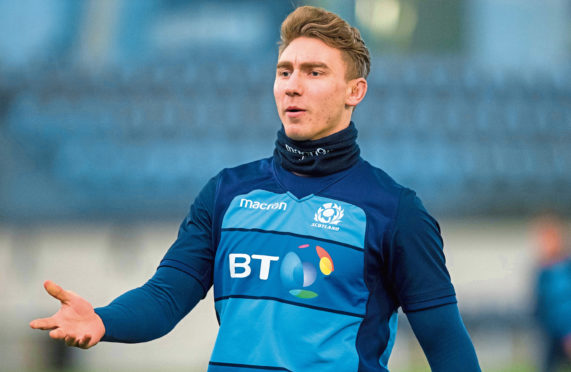Scotland’s perennial deficiency in rugby is playing numbers. As mentioned in these columns many times, England has a full team and three replacements for every registered rugby player in Scotland.
Every other country in the world rankings up to and including Fiji have more players than Scotland does.
Therefore, we have Frank Hadden’s credo, which he often repeated during his time as national head coach – the continual battle of Scottish rugby is to make more of the sum of our parts, to consistently play above ourselves.
In the professional era, this sometimes seems almost impossible.
Yet anyone, no matter which nation, can only ever pick 23 for any international game. That surely narrows the disadvantage by some considerable margin, you’d imagine.
Not for some. There’s been much talk, (and repeated in these pages) this spring about Scotland’s crippling injury list – 27 men at one point – and how we’re running out of players.
In contrast, they say, Ireland, England and Wales can pick another of the production line and brush off the loss of a key man like dandruff off their shoulder.
It’s nonsense, obviously.
For one, there’s always another cab on the rank, even for Scotland.
Sure we’d like to have John Barclay. But he’s not fit, and if he was still there, would we have even suspected Jamie Ritchie would be the best and most consistent international player of the current Scottish season?
What might seem to be the loss of a player we can’t possibly do without can be an opportunity for some.
Scotland’s bench against Italy on Saturday looked threadbare and probably played that way, but who is to say that Jake Kerr, for example, might not evehtually thrive as an international player?
You don’t know until he has a proper, significant opportunity, and more often than not that’s going to be afforded by the misfortune of another.
Stuart Hogg only got his chance because Peter Murchie got injured at Glasgow after Bernie Stortoni had left. Then Chris Paterson retired, and Scotland had little option but to blood a 19-year-old.
Nobody thought he’d be Scotland’s greatest-ever player at that time, and now there’s a better than even chance he’s going to be.
Ireland, Wales and even England don’t have bottomless pits. They can’t sustain a succession of injuries and bounce up like nothing had happened. And, recent history shows they usually don’t.
Ireland have a strong player pool developed by Joe Schmidt but it’s not completely seamless.
On Saturday against England Robbie Henshaw, a fine player, was asked to play full-back with Rob Kearney injured and Simon Zebo out of favour. It’s a project to cover should Kearney – now 32 – start to run out of gas.
Henshaw is a British Lion – at centre. He was continually caught out of position at full-back by an intelligent but reasonably basic English kicking game.
Jonny Sexton has missed two of the last three visits to Murrayfield, and Ireland lost both times he was absent. Any injury to Connor Murray, who has already been toiling a bit this season with various ailments, puts significant stress on the Irish overall gameplan.
CJ Stander’s absence at Murrayfield on Saturday with a double facture of cheekbone and eye socket, is a huge blow, no matter the attributes of Jack Conan or Sean O’Brien (a player Scotland have had fits containing in the past).
Devin Toner’s ankle problem leaves Ireland an injury to James Ryan away from Quinn Roux and Ultan Dillane or Billy Holland as their second rows. Decent players all, but you’d certainly target that area if you were an opposition forwards coach.
England are not seamless either. Saturday’s performance in Dublin was admrable for sure, but take out the Vunipola brothers and Manu Tuilagi and pretty much the same team finishes fifth, entirely on merit, in the Six Nations last year.
Maro Itoje’s absence for the next month will be keenly felt, even if Joe Launchbury and Courtney Lawes are backing up.
Wales under Warren Gatland have been one team who seem have a consistency of performance no matter who is in the shirt.
Gat has shuffled his back rows and 10s time and again by necessity or occasionally by preference. Players have been constantly shipped in and out. Many who look bang average for their regions grow an extra couple of inches in a red jersey after one chorus of Hen Wlad Fy Nhadau, it sometimes seems.
But take totems Alun Wyn Jones and Ken Owens out of that team, particularly the team that looked hapless in Paris before France started handing out free gifts, and things might be very different.
Scotland’s payer deficiency in real enough, but we’ve actually done an exceedingly good job in developing and promoting players.
Players numbers will always be an issue. But helped by the exile movement, Scotland are coping.
It’s certainly no excuse for Scotland to be content with mediocrity.
